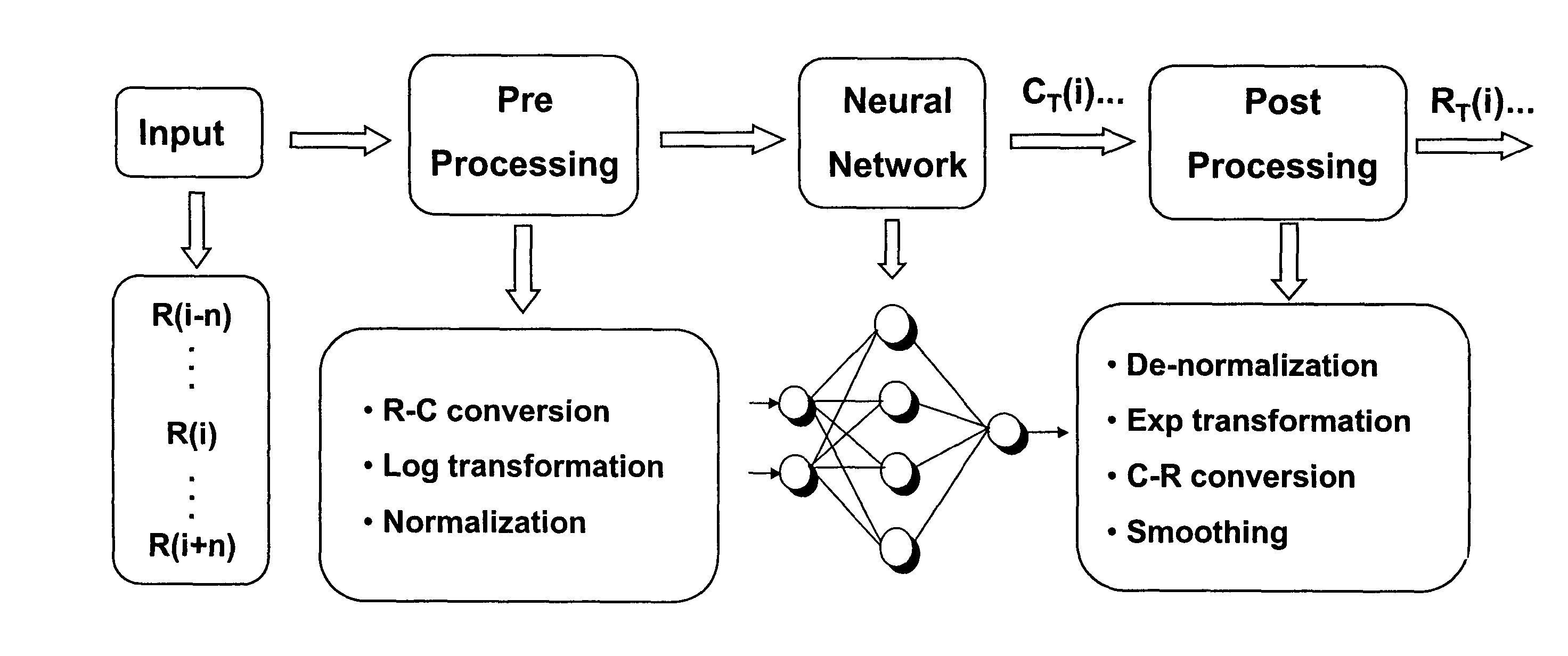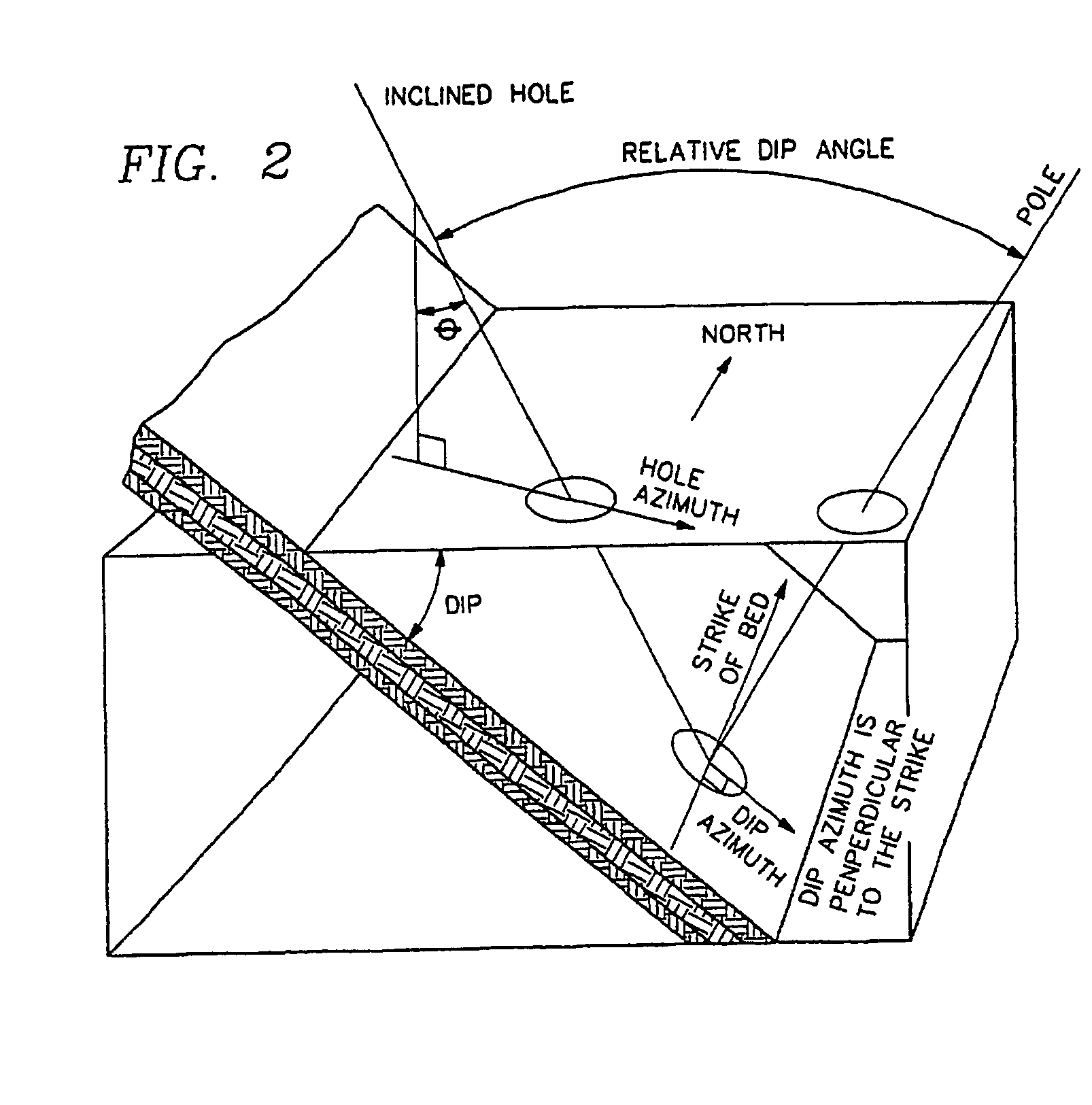Processing well logging data with neural network
a neural network and data processing technology, applied in the field of well logging, can solve the problems of adverse effects, increased difficulty in analyzing raw data, and inability to clearly represent the log or raw data of tools,
- Summary
- Abstract
- Description
- Claims
- Application Information
AI Technical Summary
Benefits of technology
Problems solved by technology
Method used
Image
Examples
Embodiment Construction
[0047]As can be seen from the references cited above, attempts to use artificial neural networks, ANNs, in the various inversion processes for well logging data have had limited success. Using large amounts of existing data to train neural networks increases the cost and expense of generating the trained ANN and has not improved the speed or accuracy or the ANN or made it widely applicable outside the area from which data was selected. Some developers have suggested that it is important to choose only those parts of the available data which are clearly accurate and not contaminated by bad borehole conditions, poor tool response, or other sources of error. If an ANN is taught to invert bad data into a good log, it is likely to invert good data into a bad log.
[0048]The present inventors have found that a viable way to avoid using bad or inaccurate data to train an ANN is to use only synthetic data. In addition, selection of training data should be based on the behavior of the selected...
PUM
 Login to View More
Login to View More Abstract
Description
Claims
Application Information
 Login to View More
Login to View More - R&D
- Intellectual Property
- Life Sciences
- Materials
- Tech Scout
- Unparalleled Data Quality
- Higher Quality Content
- 60% Fewer Hallucinations
Browse by: Latest US Patents, China's latest patents, Technical Efficacy Thesaurus, Application Domain, Technology Topic, Popular Technical Reports.
© 2025 PatSnap. All rights reserved.Legal|Privacy policy|Modern Slavery Act Transparency Statement|Sitemap|About US| Contact US: help@patsnap.com



